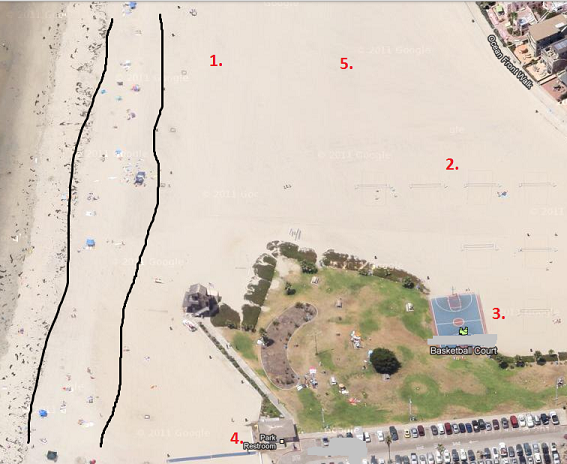Even if you don’t engage in black hat SEO tactics, you may be affected by them. Black hat SEO can be used to maintain a position at the top of the search engine results pages that isn’t really deserved based on the site’s content.
Or it can be used to attack competitors, dragging down a rival’s site. It’s enough to make many white hat SEOs and site owners furious.
The good news is that most black hat SEOs are too busy with all of their own sites to directly attack their competitors’ sites. When asked about blackhat SEO tactics, dzine, a regular poster to the SEO Chat forums for the past two years, said that proper black hat SEOs “can’t be [asked] to (willingly) lower competitors’ ranks. They just churn out website after website.”
Don’t assume, though, that it’s never done simply because it’s difficult. There’s even a term for it: negative SEO. The topic was covered by Forbes a few months ago. The article quotes Matt Cutts’ reaction to a specific form of negative SEO. “I won’t go out on a limb and say it’s impossible,” he said. “But Google bowling is much more inviting as an idea than it is in practice.”
So Matt Cutts won’t say it’s impossible. Does that mean that you need to worry? I can certainly understand why you might worry if your site held a good position in the SERPs and is now disappearing from the search engines. But that’s not immediate evidence of enemy action.
The first thing you should do is find out whether this slide in the SERPs is something that you’re doing to yourself. As Diane Aull explained in an article on Search Engine Guide, “There are too many potential ‘oopsies’ you could be committing to mention them all: robots.txt that excludes the spiders, unspiderable JS/AJAX navigation, all-Flash no-content splash page, nothing but low-quality links, crappy content with no keywords, same title tag used throughout site, etc.”
You can check the Google Webmaster Guidelines for help when you’re trying to figure out whether that drop in the SERPs might be due to an unintentional violation. If you’ve determined that the drop wasn’t due to something you did (or failed to do), you have a number of options. Before I get to those, however, I’m going to discuss some of the destructive tactics that practitioners of negative SEO might engage in to harm a site’s search engine ranking.
I turned up a number of negative SEO methods in my research, but none of them seemed to be as universally hated as Google bowling. Sometimes called a “link of death operation,” Google bowling involves linking the victim’s site to tons of bad neighborhoods such as blatant link farms and using spammy anchor text. Rather than let the search engines find these links themselves, an aggressive negative SEO would then submit the link farm pages to the search engines so that they’ll see the thousands of bad links in a hurry.
Another variation of Google bowling simply involves creating thousands of links in a short period of time to the victim’s site across a wide range of social media. To Google and the other search engines, it looks like the victim is engaging in “link spam,” and the automated algorithm may penalize the site accordingly. This is sometimes called “black social bookmarking.”
In theory, this shouldn’t work too well, because Google supposedly understands that a site owner can’t actually control who links to their site. In practice, there is at least anecdotal evidence to indicate that Google bowling does happen, and that it works, at least temporarily. Jason Duke, a London-based practitioner of negative SEO quoted in the Forbes article, noted that one of his own sites was hit by this tactic. It lost an estimated five million unique visitors in less than two weeks.
There are plenty of other negative SEO tactics. In some cases, whether they’re negative or positive really depends on how they’re used, as many of the techniques represent “too much of a good thing.” The Forbes article listed six in addition to Google bowling:
- Tattling: Reporting a site to Google for buying links from other sites.
- Google insulation: Creating more content than competitors and floating it to the top of Google results. This technique is also used by ReputationDefender to hide online criticism of its clients.
- Copyright takedown notices: A negative SEO practitioner may file a copyright complaint with a search engine against a competitor, claiming to be the copyright holder. The search engine then must remove the page from its index for 10 days while the copyright holder decides whether to sue. This approach can backfire, since someone filing a fraudulent takedown notice can become the subject of a lawsuit.
- Duplicate content: Older, more trusted sites can sometimes harm a new competitor by stealing their content. Search engines hate duplicate content. The hope is that the engines will assume that the newer site duplicated their content and penalize them accordingly – while the older site steals the newer site’s higher position.
- Denial of service attack: This basically involves making a competitor’s site unreachable by means of a DoS attack, then attempting to get the search engines to index the site while it can’t be reached – thus bumping them out of the index.
- Click fraud: I’ve covered this in a number of other articles, so I won’t repeat myself here.
He began checking his site from the source code out and couldn’t find anything wrong. He explained that “after deep analysis it was found out that someone had poisoned the dns and whichever sites were hosted on that particular server were being redirected.”
He notes that he was very lucky that Google didn’t crawl his site while the DNS poisoning was going on or he would have been in real trouble due to no fault of his own. The attack probably came from a malicious hacker who was trying to get his malware onto other computers rather than harm subzero27’s position in the SERPs. It’s worth keeping in mind, however, that certain kinds of nasty attacks can also hurt your position in the SERPs as a side effect.
One of the most brazen attacks I’ve heard of involved social engineering. Lenny de Rooy, an SEO specialist at Tribal IM, reported this attack back in March of 2007. Someone had sent an email to a number of webmasters that linked to BabyNamesWorld, one of Tribal’s clients.
The email was spoofed to look as if it had come from BabyNamesWorld, and was signed BabyNamesWorld Administration. It demanded that the webmaster remove their link to BabyNamesWorld immediately, “because I’m getting a lot of spam traffic and a lot of scammers visiting my site using a link from your site!” The email went on to threaten that if the link was not removed, “I will write an ABUSE MESSAGE to your Internet Service Provider and your hosting company and will complain that your site gives a harmful traffic to my site!”
Rooy summed up the attack as finding out who is linked to a well-ranking rival site, sending them threatening email and waiting for the response. This particular scammer also sent a follow-up email if the link was not removed quickly enough. So what did Rooy do? First, he tracked down the scammer but chose not to force their host to close their account – it was located in Tajkistan, no WHOIS information was provided, and “the scammer can just as easily create another address and continue his work, against whichever website he chooses.”
So Rooy’s company simply saw to it that emails were sent to all the webmasters, telling them not to take the email from the scammer seriously. He observed that “a large number of links have fortunately been replaced. Despite this, it remains an annoying problem.”
So what do you do if a black hat SEO is directly or indirectly attacking your site’s position in the SERPs? Diane Aull came up with five possible approaches, based on how one would deal with a schoolyard bully.
There is no telling which approach – if any – would be successful. Her suggestions would probably work best when dealing with someone who is not targeting your site with negative SEO, but rather engaging in black hat SEO to increase his or her own site’s ranking in the SERPs, thus driving yours down. You might want to consider combining several tactics for the best chance of ameliorating the problem.
First, you can ignore what is happening, as bullied children are often told to ignore the bully. From personal experience and the anecdotes I’ve heard, that approach never works in the schoolyard. And it’s hardly the one you want to take when you see your site falling further and further behind, perhaps never to recover its position.
Second, you could take up negative SEO yourself, fighting fire with fire. That might be satisfying for a while, but your success will ring hollow after both sites are banned from the SERPs. Like a high school principal, Google isn’t going to care who started it.
Third, you could report the offender to Google. Unfortunately, like the adult aides monitoring recess in the schoolyard, Google can only act on behavior it actually sees. As Aull notes, “there’s no guarantee they’ll do anything about the miscreants quickly – or ever, for that matter.” It could also encourage a black hat SEO to start using even sneakier techniques.
Fourth, you could avoid the bully. This is not the same thing as ignoring him. You simply make sure you aren’t where he is. In terms of SEO, you start targeting keywords and phrases that the black hat isn’t using. By using this approach, you can narrowly target your audience and start picking up traffic from “long tail” searches. You can also work on making your site more inviting to visitors, so when you do get that traffic they’re more likely to convert.
Fifth, you could work at becoming popular, and having enough people around you all the time that it scares off the bully. Aull’s explanation of this approach is worth quoting at length; she advocates becoming “a valued member of the web ‘community’ by linking generously, taking advantage of social networking, and developing useful content, resources and tools that others will naturally want to link to. The more ‘web friends’ you have linking to your pages, the stronger your pages will be, and the more sources of traffic you’ll have that don’t depend on the search engines. When you get the bulk of your traffic through non-search sites, there’s less chance the bully’s tactics can hurt you.”
It’s not fun when your site starts dropping in the SERPs, especially if you’ve checked everything pertaining to your site and you’re absolutely certain it isn’t your fault. I hope I’ve given you some ideas as to what you can do about it.
http://www.seochat.com






































 Garrett Infinium LS Metal Detector
Garrett Infinium LS Metal Detector
 Fisher CZ21 Metal Detector
Fisher CZ21 Metal Detector

















